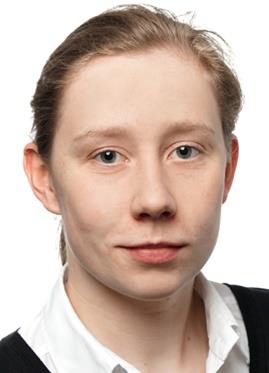
Ausbildung und Werdegang
Siehe PDF-Datei unten
Kurzfassung des Vortrags No. 45
“GSC-Based Noise and Interferer Reduction for Binaural Hearing Aids Exploiting External Microphones” Wiebke Middelberg & Simon Doclo In many speech communication applications, background noise and competing speakers decrease the intelligibility of a target speaker. Hence, reducing noise and interfering speakers is important for inter-human and human-machine communication.
To improve the speech enhancement performance, it has been proposed to exploit one or more external microphones in conjunction with a classical microphone array. Examples for such acoustic sensor networks are smart speakers in conjunction with smart phones or hearing aids connected to remote microphones. A promising processing scheme for incorporating external microphones into a beamformer is the so-called generalized sidelobe canceller with external speech references (GSC-ESR) [1,2]. The GSC-ESR relies on the assumption that the target position relative to the array is known but does not require knowledge about the position of the external microphone(s) nor the relative position of the target speaker to the external microphone(s).
Based on pre-processed array and external microphone signals a joint beamformer is computed. To actively suppress interfering speakers, we have proposed a minimum power distortionless response (MPDR) implementation of the GSC-ESR [2], which we compare to a minimum variance distortionless response (MVDR) implementation [1] in this contribution. In an experimental evaluation of the MVDR and MPDR implementation of the GSC-ESR and a local GSC (only using the array microphones), it is found that the incorporation of the external microphones leads to better noise and interferer reduction performance. Furthermore, the MVDR implementation exhibits a larger robustness than the MPDR implementation, even in adverse acoustic scenarios.
This work was funded by the Deutsche Forschungsgemeinschaft (DFG, German Research Foundation) under Germany's Excellence Strategy - EXC 2177/1 - Project ID 390895286 and Project ID 352015383 - SFB 1330 B2."

